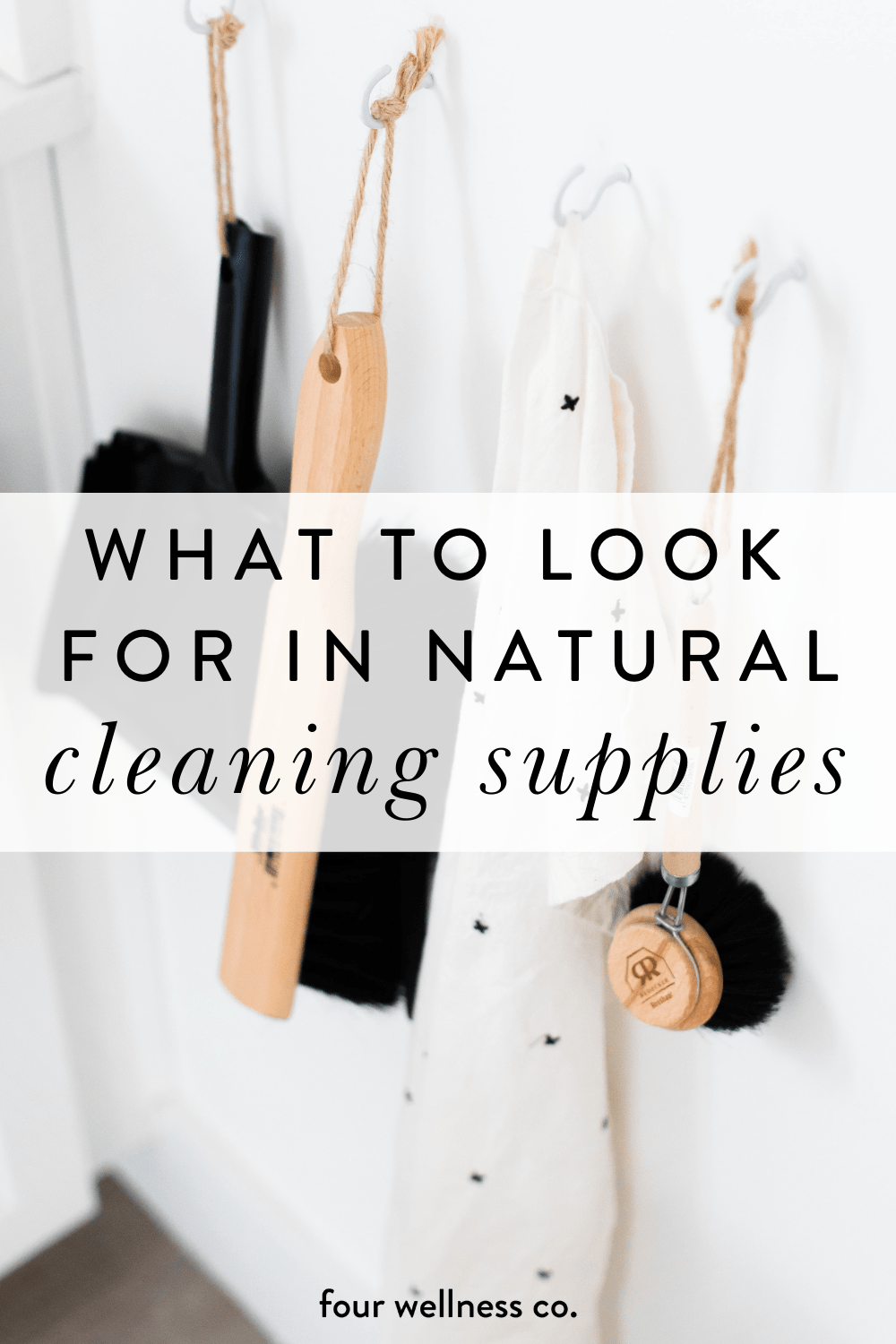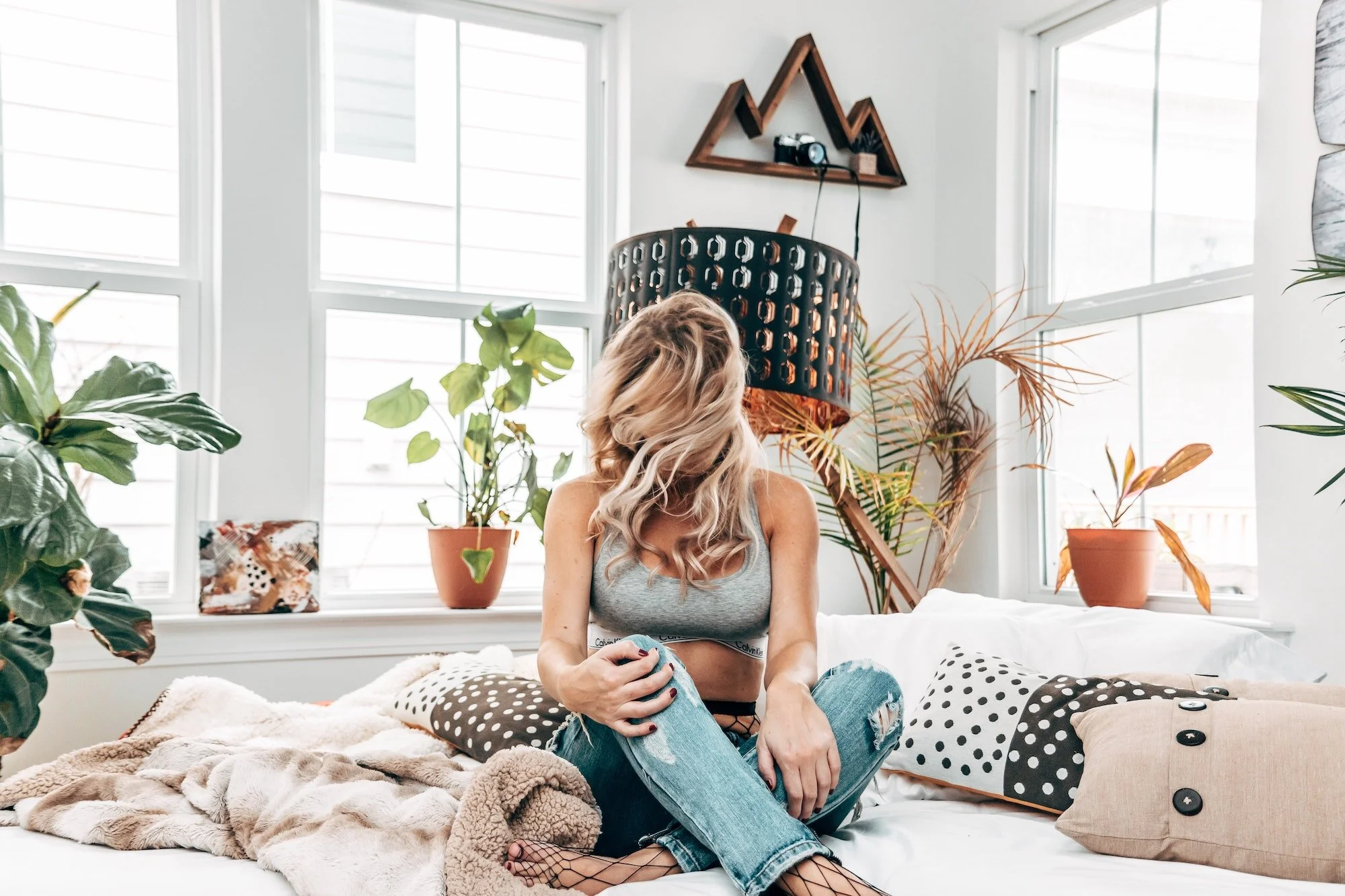How to Choose Safer Cleaning Supplies for a Healthy Home
It’s no secret that conventional household cleaners contain toxic chemicals.
But did you know that these chemicals are central nervous system disruptors, known carcinogens linked to cancer and birth defects, and common sources of allergies and skin conditions? (If you think that sounds dramatic, just take a look at the extensive caution labels or check out your cleaning products on Environmental Working Group’s label decoder.)
But you’ll be fine if you don’t drink or bathe in the cleaning supplies, right? 😅
The problem with conventional household cleaners
Many people assume that using toxic household cleaning supplies isn’t much of a problem, because we’re not ingesting them.
Well… Many of these chemicals are toxic via inhalation. (Ever notice that you get a headache or slight cough after cleaning with them for a while?) So, instead of “cleaning” your home with chemicals that are toxic for you to touch and inhale, we recommend switching to safer products with natural, plant-derived ingredients.
Safer, non-toxic cleaning supplies
The good news: There are many brands (and increasingly more each year!) offering a full line of human/pet- and environmentally-friendly cleaning supplies, many with respectable production and social responsibility standards too. Whole Foods and Target are known for carrying a wide range of options, and most mainstream supermarkets and drugstores are starting to stock more natural cleaners too.
What to look for in natural cleaning supplies
Shopping for non-toxic cleaning supplies can be a little confusing, as most of us aren’t expert chemists well-versed in the long, scientific ingredient names most cleaning products are made of.
But, here’s what to look for when buying safe, non-toxic cleaning supplies for your home:
Fully disclosed ingredient lists (if the label doesn’t tell you exactly what’s in the product and why it’s included, that’s a red flag)
Phthalate-free
Ammonia-free and chlorine-free (they produce toxic fumes, especially when combined)
Fragrance-free or clearly labeled plant-derived fragrance (beware the lone “fragrance” term, which denotes hidden synthetic chemicals—see more below)
Companies that have a mission to provide safe and environmentally-friendly products
“A” or “B” grades on EWG’s product database
Watch out for marketing, though—some products marketed as “green” or “eco- friendly” aren’t exactly that. The most important thing in choosing household cleaners is to read labels and understand their ingredient list. Lengthy chemical names can be confusing, so when in doubt, EWG’s product database is a useful tool for learning about specific ingredients and making informed decisions.
The hidden ingredients in fragrance
Fragrance is commonly added to household cleaners, but it’s generally on our “avoid” list.
While there are many fragrance-free natural cleaners on the market (and these are certainly good options, especially if you have sensitivity to fragrance), there’s a little more to the story: Not all fragrance is created equal.
Synthetic fragrance is protected as a proprietary trade secret, so its ingredients are not required to be labeled as anything other than “fragrance.” But what’s typically in it? A cocktail of chemicals including acetaldehyde, benzophenone, diethyl phthalate—chemicals linked to allergies, skin conditions, cancer and reproductive toxicity.
However, naturally derived scents (such as those from essential oils) are not proprietary and are typically labeled individually. If you’d like to use fragranced products, choose those made with natural plant-derived scents—and listed as such on the label.
Safer cleaning supplies for a healthy home
Get our guide to chemical-free cleaning for a healthier home—part of our Wellness Library of healthy living guides + resources. It covers:
✔️ what’s in conventional cleaning supplies (and why you’ll want to avoid those)
✔️ safer alternatives to use instead
✔️ our favorite nontoxic brands + where to find them
✔️ tips + tricks for cleaning your home with natural products
✔️ a checklist to build your nontoxic cleaning toolkit
Four Wellness Tip
Review your cleaning supplies & switch to healthier alternatives when possible (see our Healthy Cleaning Guide for specific nontoxic product recommendations!).












